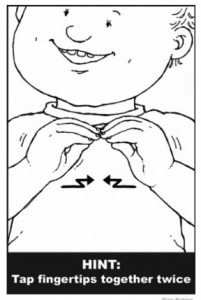As part of my practicum at Reach I have been involved in infant playgroup which is for children 0-3. I have been very interested in the work done by the Infant Development Consultants. Although I have a theoretical background from my studies in psychology about infant and child development, I have never actually worked with children this young!
My experience so far has been a combination of being in my comfort zone and trying new things. My experience in the preschool at has been very comfortable for me whereas my observation and participation in IDP has been very new and exciting!
Some observations from infant playgroup:
- just like a classroom there is a wide range of development amongst the children who come to playgroup.
- play group serves as a social space for some of the families, especially caregivers for infants with special needs.
The IDP workers who I have been shadowing are wonderful and caring professionals. The IDP consultant who runs playgroup has a great organization to the drop in program. First there is play- the children explore the environment and play with the toys that interest them. Sometimes the children play near or occasionally with other infants. After the clean up song the group washes their hands at a very low sink. The infants then come to sit at a very low table where we sing our “Juice or Water” song. We try and encourage communication by having each child choose between two colours of cups, we pour a tiny bit of juice or water so that the children are encouraged to use their language or signs to ask for more! After that is a quick circle time (maybe around 5 or 6 minutes) with lots of dancing and puppets.
There are a few main differences in the circle time compared to a circle time with older children such as kindergarten or preschool
- use of infant signs (hand signals for basic and frequent words like play, more, juice, water, time, etc)
- singing much more slowly
- lots of physical objects for the babies to hold or shake while we sing and dance!
- parent and caregiver participation – many adults!
